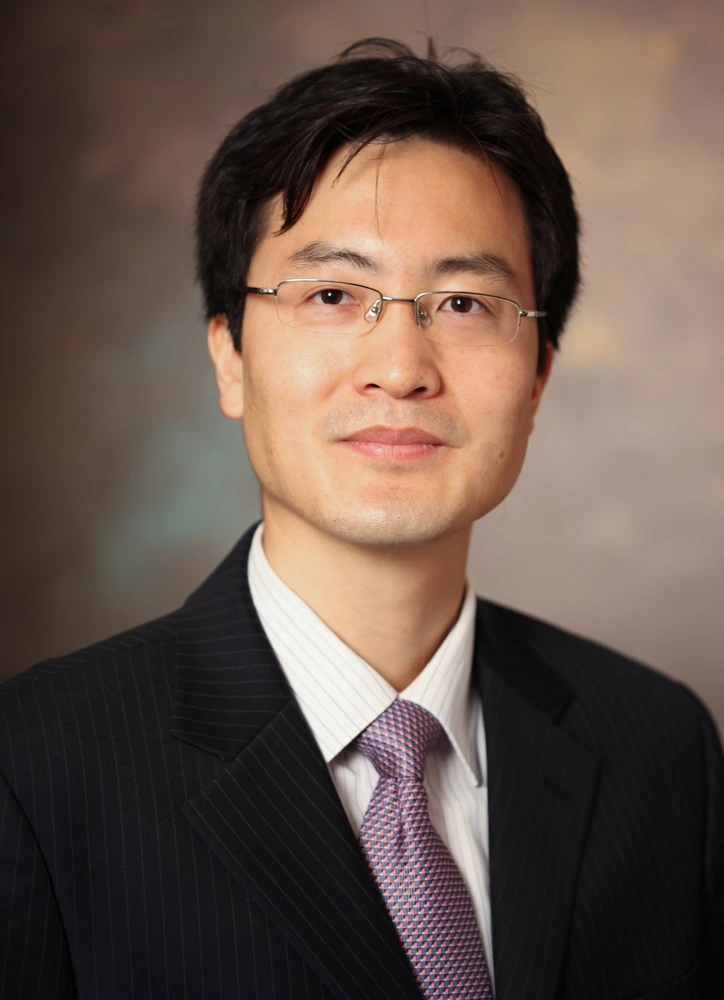
Children with Rett Syndrome develop normally for about 18 months, but then the signs begin: abnormal breathing, a regression in speech, and some loss of the use of their hands.The growth of the head slows down, and the children begin to show autistic-like symptoms.
Rett Syndrome is a disorder that almost exclusively strikes female children, says cell and developmental biology alumnus In-Hyun Park, associate professor of genetics atYale Medical School. Rett Syndrome is triggered by a mutation in the MeCP2 gene, found on the long arm of the X chromosome, and it is the second most common cause of mental retardation in females, he says, affecting about 1 in 10,000.
Park runs a laboratory in the Yale Stem Cell Center, and he is helping to lead the genetic charge against Rett Syndrome, developing an effective in vitro model of the syndrome using “induced pluripotent stem cells,” or iPS cells, which have revolutionized stem cell research.
In fact, his lab was among the earliest to reprogram human somatic cells to create the iPS cells so important for research on all kinds of diseases. Like embryonic stem cells, iPS cells have the ability to differentiate into many types of cells—muscle, nerve, blood cells, and more. But they don’t carry with them the controversy of embryonic stem cells.
When Park finished his PhD at Illinois in 2005 and went to Harvard Medical School for his postdoctoral work in the lab of George Q. Daley, the debate over embryonic stem cell research was grabbing headlines across the country.
“Deriving new embryonic stem cells using federal funding was banned because to obtain these stem cells, you have to destroy human embryos,” Park explains. “They only allowed using a few lines of human embryonic stem cells.”
He became part of the search to find ways to create “embryonic stem-like” cells. This meant hunting for techniques to reprogram somatic cells to behave like embryonic stem cells, which theoretically can generate any cell type within the human body.
Then, in 2006, Japanese researcher Shinya Yamanaka became the first to reprogram fibroblasts—cells of connective tissue—to create iPS cells.The expression of four transcription factors reset the fibroblasts to an embryonic stem-like state. For this discovery, Yamanaka shared the 2012 Nobel Prize in Physiology or Medicine.
Reprogramming a patient’s own somatic cells doesn’t just bypass the controversy over embryonic stem cells; there is also less risk that the cells will be rejected by the body’s immune system. The ultimate goal is to use iPS cells in cell replacement therapy—replacing defective cells with healthy ones. But because the use of iPS cells
in cell therapy still has biosafety issues that need to be resolved, the more immediate use for them is with in vitro modeling of diseases.
The idea is to create iPS cells that carry genetic diseases and can then be studied in vitro—the kind of work that Park has been doing with Rett Syndrome since establishing his lab at Yale in 2009.
“Cell culture has been the backbone of basic biomedical research for many decades,” he says. But iPS cells expand the cell culture possibilities. As he puts it, reprogramming technology “now provides an unprecedented approach to study Rett and indeed other diseases.”
In addition to Rett Syndrome, iPS technology has been used to model disorders such as Alzheimer’s disease, Parkinson’s disease, Becker muscular dystrophy, and amyotrophic lateral sclerosis, or ALS.
Park notes that human iPS cells are close to 99.9 percent equivalent to human embryonic stem cells. However, iPS cells retain some memory of the parental cell, which means that when they are developed from blood cells, they will retain some epigenetic memory of the parental blood cells. But as Park says, “I don’t think that will affect the future utility of human iPS cells.”
He points out that reprogramming somatic cells into iPS cells will also help researchers acquire cellular material that would normally be difficult to obtain—such as cortical brain neurons.
Park grew up in Suwon, South Korea, about 19 miles south of Seoul. He came to the United States for the first time when he arrived on the Illinois campus during the summer of 2000. Coming from an extremely crowded city in a geographically small country like South Korea, he says he was initially shocked by the open spaces of Central Illinois—especially on a large campus with few students present during the summer.
“It was a big school, and nobody was around,” he recalls. “It seemed very strange.”
But perceptions quickly change. Park says that after spending five years at Illinois, he went to Boston to do his postdoctoral work and “it was too many people.”
Park credits his PhD mentor at Illinois, Jie Chen, for laying the groundwork for his career, and he’s grateful to the CDB program for exposing him to many research areas, from cellular signaling pathways, epigenetics, and cytoskeletons to yeast genetics, neuroscience, and Drosophila genetics.
He also has fond memories of playing basketball regularly at the Activities and Recreation Center, and once he even squared off against Illinois basketball standouts Warren Carter and Deron Williams, who went on to become an NBA star. He says the one time he faced Williams on the court, no one could stop the Illini point guard, and Williams scored at will.
But Park likes challenges, especially those in the lab. For instance, when he was first trying to develop human iPS cells, it took about 24 trials to succeed. “But now, after seven or eight years, it’s become standard protocol,” he says.
“It can be difficult, but having to overcome challenges is all right when you like the research,” Park adds. “Most scientists do science because they like challenges.”